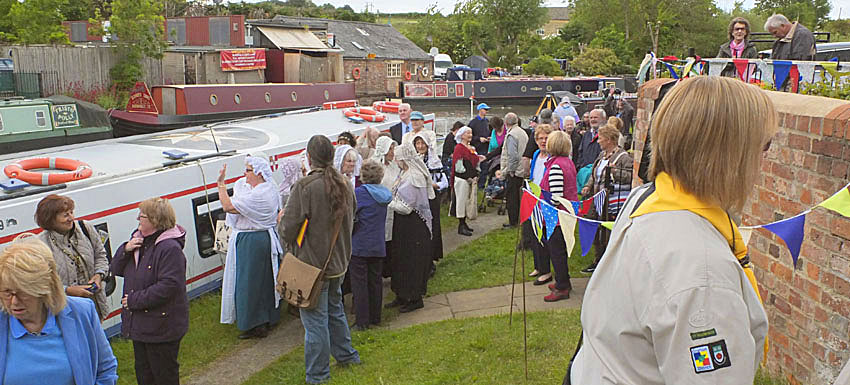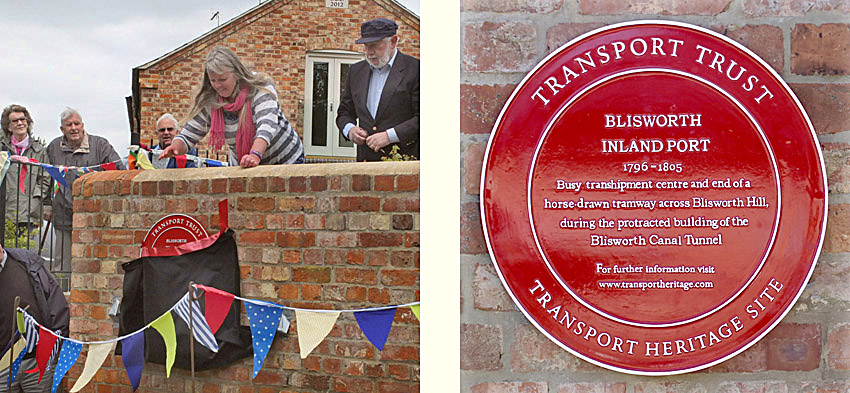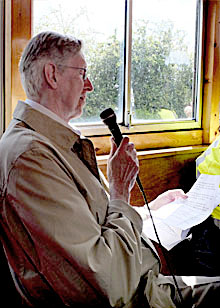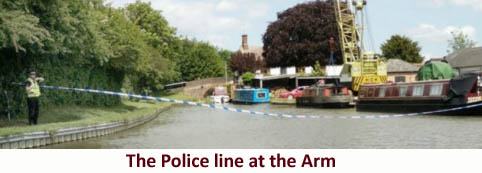|
Blisworth Red Wheel Day organised by the Blisworth Canal Partnership for the Transport Trust Introduction - brief history The village had "slept for centuries", with perhaps the exception of being very much awake in the years during and immediately after Cromwell's Commonwealth years. There was a rude awakening that arose out of the industrial revolution. The initial signs were perhaps the team of surveyors in 1792 wandering over the "north field", a tract of land that was still not enclosed, and spending much time on Blisworth Hill all the way over towards Stoke Bruerne. The surveyors must have told villagers of an intended waterway to be dug through the parish and a fantastic-sounding tunnel to be dug through the hill in a bid to make a waterway joining Birmingham with the Thames in London. Some senior villagers would be aware of the subsequent developments which unfolded and maybe they were not surprised when the deep and wide trench was being dug in 1795 and 1796 and the arrival of the extended trench at the little bridge that carried the road to Towcester over a stream which, each winter, filled the water-mill pond. That mill-pond was orphaned from its water which, along with other streams running off the hillside, was used to gradually fill the trench. What then happened was that the space, near the bridge, on both sides of the trench was levelled and cut back and dressed with ground limestone or cinders to form makeshift wharves. The trench was christened "The Grand Junction Canal" as it brought the first horse drawn barges from Birmingham. There would be consignments of coal, bricks and timber arriving to be stacked on the new wharves where there would also be goods from the midlands that could be shipped back to Birmingham - obviously shoes and boots would be prominently represented as would a certain amount of building stone. The road from Northampton to Towcester was upgraded to a turnpike in 1796 and this simply meant that a group of managers purchased materials and labourer's time to maintain the road in a fit condition for the extra traffic. The funding for this was generated at toll gates which sprang up every mile or so, much to the distress of all the farmers of the area. The other half of the canal route was being established, also during the 1793 - 1796 period, and work was begun on the tunnel through the hill. Another toll gate road was established over the hill in 1796. This road was extremely stressed in providing the continuity of canal-borne goods from Blisworth to Stoke Bruerne so completing, after a fashion, the connection between Birmingham and London. So stressed, in fact, that a horse-railway was set up in 1800 by a Derby engineer (Mr. Outram) to take some of the shipping load away from the road over the hill. This rail line was established with its terminus at the western wharf in Blisworth, running on the west side of the canal, over the hill which was to contain the tunnel, and running down to the eastern side of the canal at Stoke Bruerne and further south to its other terminus beyond the place where locks were to be built in the centre of Stoke Bruerne. The hill railway was built after a desperate stall in progress over the building of the tunnel during which some consultants were brought in the advise. The chief problems were that the line of the first tunnel attempt was slightly cranked and the digging work on it had been destroyed at one end and severely hampered at the other by water springing out of the hill. A new line was surveyed and work began on it in 1801 or 1802 once the excavation that was started into the hillside was continued another 300 yards, "by digging through the ruins of the first attempt" Once the tunnel was completed in 1805 the hill railway was closed. The pressure on the wharves at Blisworth would be lessened Celebration, June 6th 2015 - our Red Wheel Day
At ten o'clock members of the village and some officials from council and Transport Trust assemblied at the towpath near Mill Bridge. Jan Andrews of our Canal Partnership, James Clifton of the Canal and River Trust, Stuart Wilkinson of the Transport Trust gave short speeches to explain the need for a Red Wheel plaque commemorating the period 1795 - 1850 through which the village held the status of one of the most important inland trans-shipment ports in the British Isles. Jan Andrews then unveiled the plaque watched by Stuart Wilkinson to her left.
On the boat trip, organised so that the "dignitaries" were on "Indian Chief" and all the rest were on "Crusader", there were heritage commentaries given respectively by yours truly and Hilary Spurrier from the BHS. Whilst I am sure we agreed on the facts, I do suspect that my talk was insufficiently interesting, since I am aware of omitting 3 or 4 details and of the fact that there is virtually no archaeology from our canal building era that remains for us to point at, other than proof of an aborted tunnel line that is mainly evident on the south side of BlisworthHill.
Details of the history and the background to the plaque, this one being the 75th that has been installed in the British Isles, may be found in due course on the Transport Trust website. Tony Marsh, June 2015.
|


 The rest of the day was spent first taking a boat
trip to the tunnel mouth and the junction of the Northampton Arm, which by
1817 provided the inclusion of Northampton into the canal system and a means of
connecting with the River Nene. This arm of water was briefly preceded by
a horse railway referred to in a Grafton map as a "Rail Road" (ie.
the Americans alone did not invent this term!). There followed a continued celebration at
the Chapel Tea Room with refreshments and the cutting of a celebratory
cake baked by Beryl Payler. There were also organised trips to the tunnel
hut to view the
The rest of the day was spent first taking a boat
trip to the tunnel mouth and the junction of the Northampton Arm, which by
1817 provided the inclusion of Northampton into the canal system and a means of
connecting with the River Nene. This arm of water was briefly preceded by
a horse railway referred to in a Grafton map as a "Rail Road" (ie.
the Americans alone did not invent this term!). There followed a continued celebration at
the Chapel Tea Room with refreshments and the cutting of a celebratory
cake baked by Beryl Payler. There were also organised trips to the tunnel
hut to view the  The boat trip was curtailed at Blisworth Arm because of a fuel leak discovered during the
early hours and the Northamptonshire Police have described it as the result of a “criminal act”.
There was a considerable danger of explosion or fire arising from the leak.
An announcement was made on the lines of -“We are appealing for any witnesses who may have seen anything suspicious in that area
during the early hours of today to contact us as soon as possible on 101 or Crimestoppers
Anonymous”. It would appear that some rather unwise thieves were
"collecting" scrap iron but felt they couldn't brave the probable
consequences of completing the task.
The boat trip was curtailed at Blisworth Arm because of a fuel leak discovered during the
early hours and the Northamptonshire Police have described it as the result of a “criminal act”.
There was a considerable danger of explosion or fire arising from the leak.
An announcement was made on the lines of -“We are appealing for any witnesses who may have seen anything suspicious in that area
during the early hours of today to contact us as soon as possible on 101 or Crimestoppers
Anonymous”. It would appear that some rather unwise thieves were
"collecting" scrap iron but felt they couldn't brave the probable
consequences of completing the task.